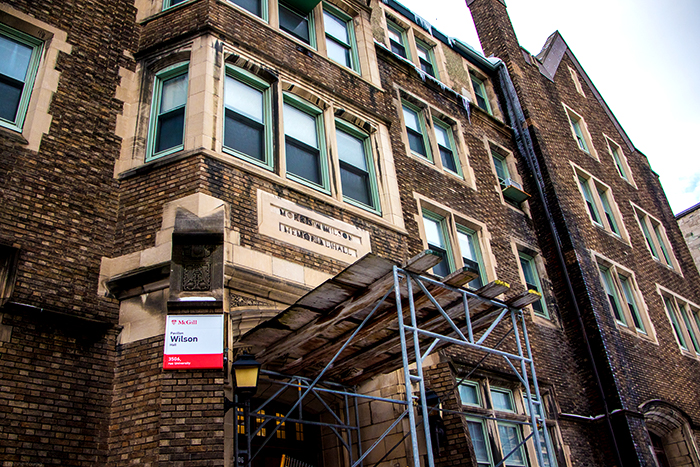In October 2017, the Social Work Students’ Association (SWSA) launched a campaign to designate the bathrooms in the School of Social Work’s Wilson Hall as gender-neutral, meaning that students of any gender would be able to use any bathroom they please. On Jan. 9, the campaign succeeded, and most of the building’s bathrooms have been degendered. The impact of deconstructing gendered bathrooms at McGill goes deeper than just making students more comfortable in the moment. It creates a public space where compulsive gender performance—that is, alignment with a binary gender—is less necessary, altering the gendered architecture of the school. In the context of the gendered bathroom’s history, this is especially notable.
Most humans living before the Victorian era, when the private bathroom first entered the scene, would be baffled by the SWSA’s victory. Until 1739, public facilities in the Western world were not only, in some circumstances, communal, but also reserved for men. Men in ancient Rome sat alongside each other in communal public toilets, and public women’s toilets were unheard of. In the United States, bathrooms were not legally segregated by gender until the early 1900s, as a manifestation of the idea that men and women belonged in separate spheres, intellectually and spatially.
The short history of gendered toilets teaches us, first, that washrooms are a place where public notions of gender are expressed, and second, that these notions of gender are dependent on social context beyond the stall.
If the public washroom is a place where acceptable gender performances are reinforced, as Sheila Cavanagh argues in her book, Queering Bathrooms: Gender, Sexuality and the Hygienic Imagination, then the SWSA’s grassroots initiative challenges the social control of gender on campus. In degendering its bathrooms, the SWSA deconstructs gender roles instead of reinforcing them, and opposes a history in which gender politics and taboos play out in the washroom. This has positive implications not just for individual students, but for McGill’s campus culture as a whole.
By affirming trans and gender non-conforming individuals— thereby making them feel safer at school—the change in physical space created by the SWSA contributes to creating a larger academic environment that does not rely on notions of binary gender. Degendered washrooms tacitly encourage people of all genders to contribute in an academic context, by creating an inclusionary physical environment that allows trans and gender non-conforming students to feel more comfortable. As the history of washrooms shows, a shift in washroom culture can be indicative of a shift in wider cultural factors—factors that also influence academia and student life. Although a small detail such as degendered bathrooms may not seem revolutionary to unaffected students, it is a signpost of larger social change on campus. For example, the breakdown of the bathroom binary could occur alongside the breakdown of homogenous academic norms that prioritize the perspectives of straight, white, cisgender men. The creation of physical learning spaces that allow for a multiplicity of student identities might encourage such diversity in academic research.
As laudable as the achievement of the SWSA is, it was an entirely student-driven initiative. Similar grassroots movements at schools such as Brown University and Wesleyan University have also been student-run. Tellingly, the only floor in Wilson Hall that has retained its gendered bathrooms is reserved for administrative offices. Administrators at McGill should support their students in reworking their spaces to fit their needs and provide resources to enact lasting institutional change, rather than acting apathetic or hostile. Degendering bathrooms stands to positively impact all members of the McGill community, not just students.
Gendered bathrooms are neither natural nor necessary, and they are bastions of a gender ideology that hurts McGill students. The SWSA has it right: It is time to reach the next phase in the history of bathrooms.








you know, some of us don’t want to be forced to share washrooms with men. there can be some gender neutral washrooms in each building, but the rest should remain gendered. they have their access needs met while not impacting the comfort of the other 99% of us normal people. #metoo
No one is forcing you: these are the services that are on offer. If you don’t like the way public washroom access is organized, don’t use public washrooms.